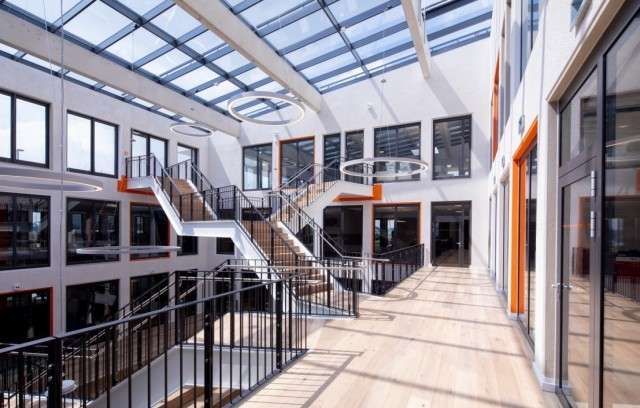Use of glass for fire protection
Use of glass for fire protection,
Glass is usually marked as the weakest part of a building, but this is not always true,
with technological advancements and continuous industry innovations,
glass has been created that can protect the building from fire.
This type of glass allows natural light to enter the environment,
and other than fire there are other threats such as hot gases, smoke and heat transfer,
which puts the safe evacuation of people and property protection at risk.
The building codes of most countries specify the required level of protection for building materials,
parts, systems and other items rated for fire resistance and fire response.
These requirements are usually specified in relevant laws,
standards or technical instructions and vary depending on the type of building, its use, its height,
and the number of occupants who could be threatened in the event of a fire.
And in Europe and according to the European standard EN13501-2. E/EW & EI),
fire retardant glass is
classified into three classes

Rank 1 *E* Integrity
The ability of a building element with a separation function to withstand exposure to fire,
without the fire traveling to the uncovered side due to the passage of flames or hot gases.
This may cause the uncovered surface or flammable materials adjacent to that surface to ignite.
Class E represents the glass’s ability to uniformly withstand high thermal stress and prevent premature breakage due to high tempering.
Tempered glass is a type of safety glass that is manufactured with the help of heat or chemicals used to strengthen the glass.
The process of using this type of glass in construction is sometimes referred to as “hardening”,
and tempered glass is four times stronger than typical annealed glass of the same size and thickness.
Other advantages include greater tensile strength, so that it can easily bend without breaking,
and is also windproof.
Tempered glass breaks into round cubes instead of pointed shards,
and this feature is the most important pillar in determining the safety of glass in the event of a fire emergency.
2nd rating *EW* Radiation “W”
It is the ability of the building element to withstand exposure to fire,
in order to reduce the risk of fire transmission as a result of radiant heat.
The item may also be required to protect people in the vicinity.
The radiation control factor is also an important part of this classification,
and thanks to the special heat-reflecting coating that provides partial reduction of radiant heat,
it is possible to prevent the spread of fire and create safe evacuation passages.
Classification 3 *EI* Thermal Insulation “I”
It is rated for complete thermal insulation, providing the highest level of fire protection.
EI rated fire-resistant glass splits fire for up to 120 minutes.
Below are some models built with passive fire protection glass from Vetrotech Saint-Gobain,
able to effectively resist such threats and save lives.

Zugspitze/Eibsee mountain station, Germany
In July 2018, the conversion of the mountain station of the new Bavarian Zugspitze cable car line was
completed and the Panorama 2962 Summit restaurant opened.
Hasenauer Architects presented the new design which was a new extension of the building on the highest mountain in Germany.
The new design offers stunning panoramic views thanks to the expansive glazing,
and the fire rated glass panels ensure safety at the mountain station.
The production, delivery and installation of the glass required tremendous efforts from all involved,
and the main challenge was to equalize the pressure in the glass between the inside and the outside.
The site was the highest construction site in Germany,
with an elevation of close to 3000 meters above sea level,
and 176 square meters of Contrafilm glass panels were installed in this harsh environment.

Westland Distillery in Seattle, Washington
Urbanadd architects turned to Vetrotech for a solution that meets fire safety requirements while allowing visitors a free view inside the distillery.
The resulting three-storey internal structure was made of metal inlay,
multiple layers of drywall, and wood cladding.
The scattered panels of Vetrotech Contraflam 120 in VDS frames also allow the wall system,
to meet the two-hour fire safety requirement while keeping the unique drip process in full view of visitors.
The distillery was looking for an elegant solution that could allow visitors to view the inner workings of the plant.
Regulations require footage to be behind walls, Contraflam was essential to block out radiant heat,
yet still provide high light transmission and visibility, and this was a unique solution incorporating safety,
regulations and aesthetics.






